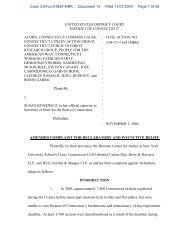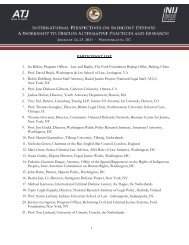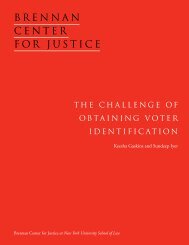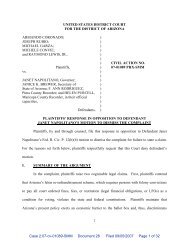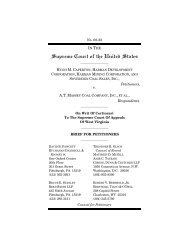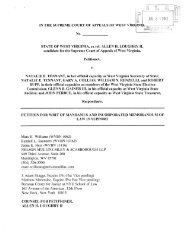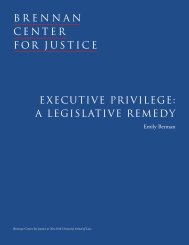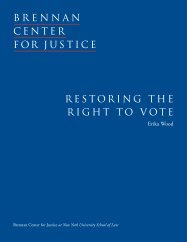THE NEW YORK STATE LEGISLATIVE PROCESS: AN ...
THE NEW YORK STATE LEGISLATIVE PROCESS: AN ...
THE NEW YORK STATE LEGISLATIVE PROCESS: AN ...
Create successful ePaper yourself
Turn your PDF publications into a flip-book with our unique Google optimized e-Paper software.
of these committees. 142 In 1971, a former Senate Majority Leader summarized<br />
the situation in terms that could apply fully as well today: “The Rules Committee<br />
can do anything.” 143<br />
The rules committees, and by extension the Speaker and Majority Leader, have<br />
controlled the fate of legislation for at least a century. In 1906, for example, the<br />
New York Times reported a failed attempt on the first day of the Assembly session<br />
“by Democrats and some Republicans to take from the Committee on Rules its<br />
plenary power over legislation in the last ten days of the session.” 144 In 1913,<br />
Chester Lloyd Jones, a scholar of American legislative procedure, noted that the<br />
ten days during which the rules committee had its extraordinary powers were in<br />
fact extended by party leaders, who “set the day for adjournment earlier than<br />
there was any possibility of adjourning,” thus lengthening the actual period of<br />
Rules Committee control to up to a month. 145 By the 1940s, the rules committees<br />
in both houses had consolidated “virtually a directive power over the process of<br />
legislation,” particularly in the last weeks of the session. 146<br />
■ <strong>THE</strong> <strong>LEGISLATIVE</strong> CALENDARS<br />
The legislative chambers of most states, including New York, and the Congress<br />
use a calendar system to organize their business and determine when and<br />
whether a bill will be considered by the full chamber. 147 In general, bills may be<br />
scheduled for floor debate using one of three methods: (1) by automatic calendar<br />
(e.g., in numeric sequence, alphabetical order by committee name, or in the<br />
order reported from committee); (2) by specific order of the presiding officer or<br />
another individual leader; or (3) by the determination of a rules or management<br />
committee. In New York, both chambers use an automatic calendar of sorts, but<br />
allow the Speaker and Majority Leader to exercise control over the order of the<br />
calendar in their respective chambers.<br />
Although “relatively few individuals [are] involved in calendar decisions in most<br />
state legislatures,” 148 New York’s system is unusual in placing complete control in<br />
the hands of the Speaker and Majority Leader. As a formal matter, all bills must<br />
proceed through three stages or “readings” prior to a floor vote. 149 In the Senate,<br />
all bills reported by a standing committee (unless designated an “order of special<br />
report”) are automatically placed on the “first report” calendar, moved to the<br />
“second report” calendar after one legislative day, and then to the “order of third<br />
reading” after another legislative day. 150 This schedule can be collapsed into a<br />
single day upon unanimous consent of the Senators. If a bill reaches the third<br />
reading, then the vote on its final passage “shall be taken immediately thereafter.”<br />
151 But a bill does not reach a third reading unless and until the Senate<br />
Majority Leader so allows.<br />
In every other state, legislation may be removed from a calendar only by a majority<br />
vote. 152 Under New York’s Senate rules, however, action on bills listed on the<br />
Senate calendar may be suspended by requesting that a “star” be placed beside<br />
<strong>NEW</strong> <strong>YORK</strong> <strong>STATE</strong>’S <strong>LEGISLATIVE</strong> <strong>PROCESS</strong> 21



